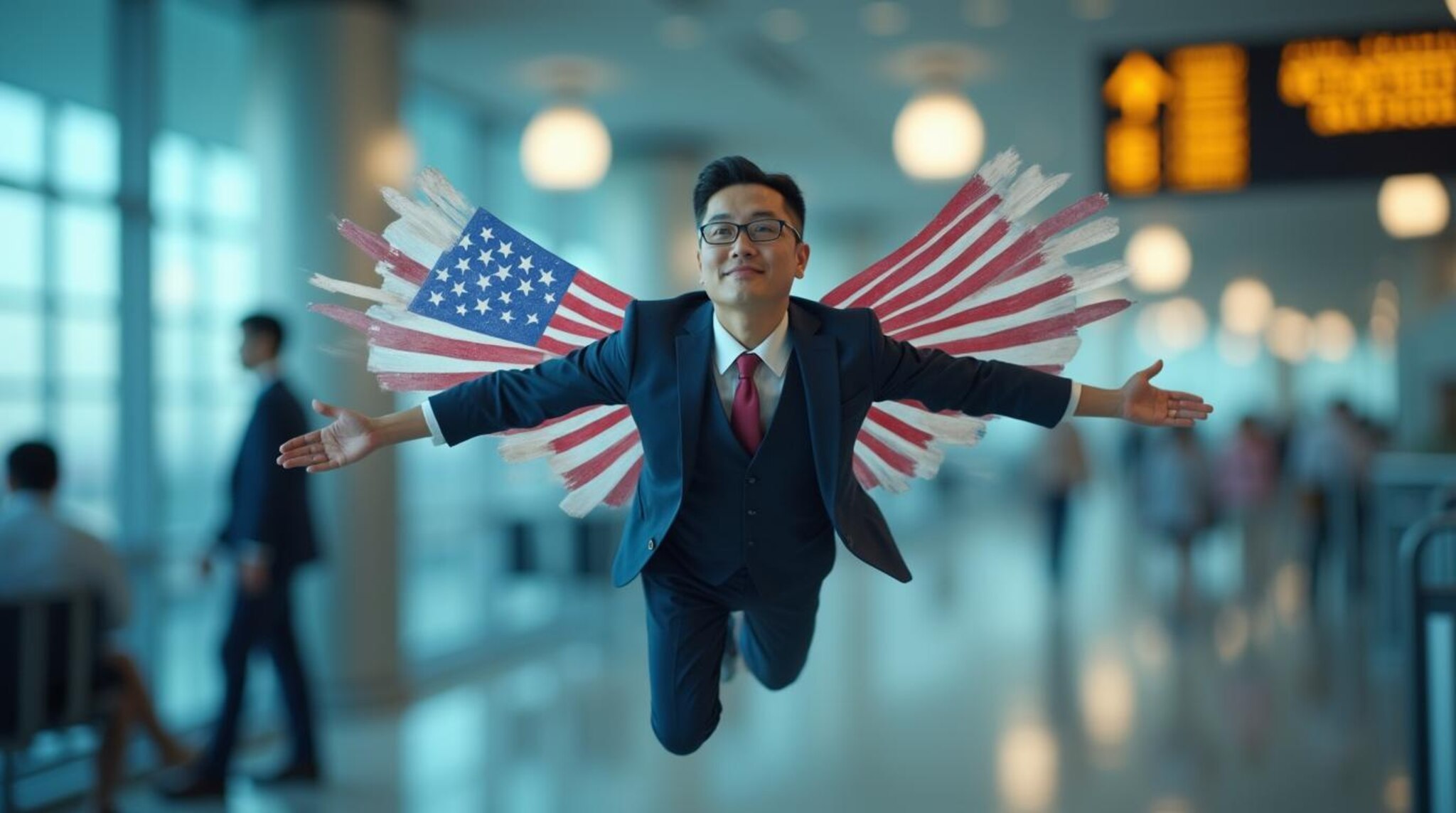US-Korea Travel Breakthrough: What It Means For You
Introduction
The first meeting of the US-Korea Business Travel and Visa Working Group happened recently. This is big news for travelers. The meeting took place on August 30, 2025. It marks a new chapter in travel relations.
This working group aims to make business travel easier. It focuses on visa processes and travel requirements. Both countries want to strengthen economic ties. They recognize the importance of smooth business travel.
The United States and South Korea have strong economic relations. Trade between them exceeds $170 billion annually. Business travel plays a crucial role in maintaining this relationship. Easier travel means more business opportunities.
This article will explain everything you need to know. We will cover the meeting's outcomes. We will discuss practical implications for travelers. You will learn how this affects your future business trips.
The changes could save time and money for business travelers. They might make visa applications simpler. Understanding these developments is important for anyone doing business between the two countries.
What Is the US-Korea Business Travel and Visa Working Group?
The working group is a joint initiative. It brings together officials from both countries. Their goal is to improve business travel conditions. They address visa issues and entry requirements.
The group includes representatives from multiple agencies. From the US side, the Department of State leads the efforts. They work with Homeland Security and Commerce departments. Korean representatives come from their Foreign Ministry and Justice Ministry.
Purpose and Objectives
The working group has clear goals. First, they want to streamline visa processes. This means faster application reviews. It could mean fewer documents required.
Second, they aim to enhance travel security. They want safe but efficient border procedures. Third, they focus on mutual economic benefits. Easier business travel should help both economies grow.
Historical Context
US-Korea travel relations have evolved over time. The Visa Waiver Program started in 2008. It allows Koreans to visit the US for up to 90 days without a visa. Americans have enjoyed similar privileges in Korea.
However, business travel often requires longer stays. It may involve different visa categories. The working group addresses these specific needs. It builds on existing travel agreements between the nations.
Key Outcomes from the Inaugural Meeting
The first meeting produced several important results. Both sides agreed on priority areas. They established a framework for future cooperation.
Visa Processing Improvements
Officials discussed ways to speed up visa processing. They explored digital application options. They considered extending visa validity periods. Current business visas typically last one to five years.
The group examined biometric data sharing. This could make border crossings faster. They also talked about pre-clearance programs. These would allow vetting before travelers reach airports.
Documentation Requirements
Another focus was simplifying paperwork. Business travelers often need many documents. These include invitation letters and business registration copies. The group wants to reduce this burden.
They discussed creating a standard document checklist. This would make applications more predictable. They also considered digital document verification systems.
Timeline for Changes
Some improvements may happen quickly. Others will take more time. The group plans to meet regularly. They set specific milestones for the next year.
First-phase changes could appear within six months. These might include extended visa interview hours. They could involve more visa application centers.
Practical Implications for Business Travelers
These developments affect real people. Business travelers will see concrete benefits. Understanding these changes helps you plan better.
Visa Application Process
The visa process might become simpler. You may need fewer documents. Processing times could shorten significantly. Currently, US business visa processing takes 3-8 weeks.
Digital applications might reduce paperwork. Online submission could become standard. Payment systems might be streamlined too.
Border Entry Experience
Border crossings could become smoother. Automated gates might be expanded. Dedicated lanes for business travelers are possible. These would speed up airport arrivals.
Customs declarations might be simplified. Pre-registration options could be introduced. This would save time at busy airports like Incheon and JFK.
Cost Considerations
Travel costs might decrease. Faster processes mean less time off work. Multiple-entry visas could last longer. This reduces renewal expenses.
Some fee structures might change. The group discussed visa fee optimization. They want to balance cost recovery with accessibility.
Step-by-Step Guide to Current Business Visa Process
Knowing the current process helps understand future changes. Here is how business visas work now.
For Americans Traveling to Korea
- Determine your visa type (typically C-3-4 for business)
- Complete the application form online
- Gather required documents:
- Passport with 6 months validity
- Passport-style photo
- Business invitation letter
- Company registration documents
- Financial proof
- Submit application to Korean embassy or consulate
- Pay the application fee ($45 currently)
- Wait for processing (typically 5-10 business days)
- Receive visa and prepare for travel
For Koreans Traveling to US
- Determine if you need a visa (B-1 for business)
- Complete DS-160 form online
- Pay MRV fee ($185 currently)
- Schedule visa interview at US embassy
- Gather documents:
- Passport
- Photo meeting US requirements
- Business invitation
- Employment verification
- Financial documents
- Attend interview
- Wait for passport return with visa
Statistics and Data: US-Korea Business Travel
Numbers help understand the scale of business travel. They show why these improvements matter.
Travel Volume
Over 2.3 million people travel between the US and Korea annually. About 35% of these trips are for business purposes. That means approximately 800,000 business trips each year.
Pre-pandemic numbers were even higher. In 2019, business travel reached nearly 1 million trips. Recovery is happening but not complete yet.
Economic Impact
Business travel generates significant economic activity. Each business trip spends an average of $3,500. This includes flights, hotels, meals, and local transportation.
Total business travel spending exceeds $2.8 billion annually. This supports thousands of jobs in both countries. Easier travel could increase these numbers.
Visa Statistics
The US issued over 150,000 business visas to Koreans in 2024. Approval rates were around 85%. Processing times averaged 4 weeks.
Korea issued approximately 90,000 business visas to Americans. Their approval rate was higher at 92%. Processing was faster at about 2 weeks.
Practical Tips for Business Travelers
These tips will help you navigate the changing landscape. They apply regardless of upcoming improvements.
Document Preparation
- Keep digital copies of all documents
- Update business registration papers regularly
- Maintain consistent financial records
- Have invitation letters translated if needed
- Create a travel document checklist
Timing Considerations
- Apply for visas at least 3 months before travel
- Avoid peak travel seasons if possible
- Schedule flights during less busy times
- Allow extra time for first-time applications
- Check processing times before applying
Cost-Saving Strategies
- Apply for multiple-entry visas when possible
- Use visa application centers instead of embassies
- Group business trips to minimize applications
- Track visa expiration dates carefully
- Consider global entry programs for faster clearance
Real Examples and Case Studies
Real stories show how these changes affect people. Here are some examples from business travelers.
Small Business Owner
Ji-hoon Kim runs a tech startup in Seoul. He travels to Silicon Valley regularly. The current visa process costs him time and money.
"I spend about 20 hours on visa paperwork each year," he says. "Faster processing would help my business grow. I could make more trips and close more deals."
Corporate Executive
Sarah Chen is a US-based manufacturing executive. She visits Korean suppliers monthly. Border delays affect her productivity.
"I lose half a day each trip to immigration procedures," she explains. "Dedicated business lanes would recover this time. That means more factory visits and better quality control."
Consultant Experience
Mark Johnson advises US companies on Korean market entry. He helps with regulatory compliance and partnerships.
"My clients need quick access to Korean markets," he notes. "Simpler visa processes would let us respond faster to opportunities. This keeps us competitive against other regions."
Frequently Asked Questions
When will these changes take effect?
Some improvements may appear within 6 months. Others will take longer. The working group meets regularly to track progress.
Do I need to reapply for my current visa?
No, existing visas remain valid. Changes will affect new applications only. You can use your current visa until it expires.
Will visa fees change?
Fees might be adjusted but not immediately. The group is studying cost structures. Any fee changes will be announced well in advance.
Can I apply for a visa online now?
Some steps are already digital. Both countries offer online forms. However, interviews and document submissions still require in-person visits.
Will visa-free travel be affected?
No, the Visa Waiver Program continues unchanged. This working group focuses on business visas specifically. Tourist travel rules remain the same.
How can I stay updated on changes?
Check official government websites regularly. The US Department of State and Korean Ministry of Foreign Affairs post updates. Subscribe to their newsletters for announcements.
Are there any immediate benefits?
Extended embassy hours are already happening. Some locations now offer weekend appointments. Check your local embassy for current services.
Conclusion
The inaugural meeting marks significant progress. It shows both countries' commitment to easier business travel. The working group has clear goals and a practical approach.
Business travelers should see real benefits soon. These include faster processing and simpler requirements. The changes will save time and reduce costs.
Staying informed is important. Check official sources for updates. Prepare your documents in advance. Take advantage of new services as they become available.
The US-Korea relationship continues to strengthen. Business travel improvements will help both economies. They will create new opportunities for companies and individuals.
Remember that changes happen gradually. Be patient but proactive. Use the tips in this article to navigate the transition. Your business travel experience should improve significantly.
This is an exciting development for international business. It represents a new chapter in US-Korea relations. The future looks bright for business travelers between these two important partners.

